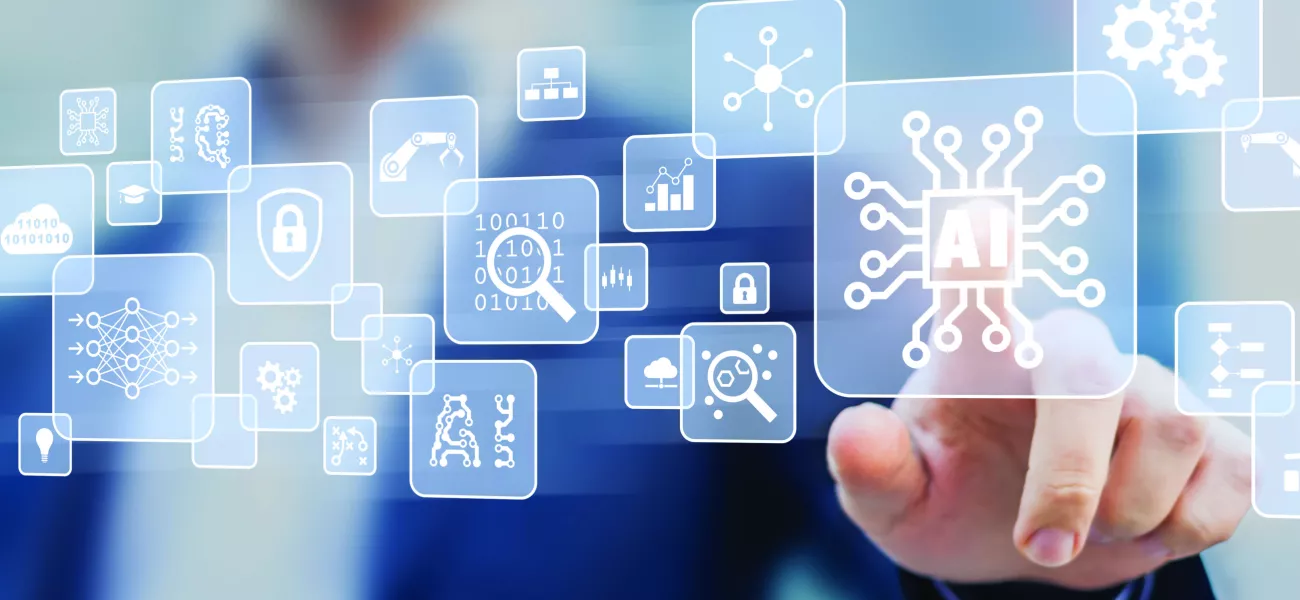
Sienna Cacan, Global Enterprise Segment Marketing Manager at Axis Communications, explores the potential of cutting-edge technology to make data centers smarter, safer, and more efficient.
The digital infrastructure sector is set for explosive growth. Demand for electronic services is likely to double over the next decade, and the worldwide data-center industry could triple in size over the same period to meet this expanded need. Much of that infrastructure powers the day-to-day services that the world has come to rely on, but a huge part of the growth in demand comes from the next generation of service provision: the world of AI.
Artificial intelligence has changed significantly in recent years. Generative AI’s many headlines have come from its rapid evolution, and we’ve seen text, image, and even video generation moving into mainstream tools. But predictive AI – built not to generate data but to analyze and draw conclusions from it – has received a more muted public reaction. This is despite its potential to extract valuable insights from sound, images and, most importantly, video beyond anything we could ever hope to achieve with humans alone.
Uniting video data and AI
AI is not just a growth driver, it’s a growth enabler. As data centers expand in size and become more complex, and as their locations spread to meet demand across the globe, AI will play a vital role in simplifying the local and remote management of data center sites. As power draws increase – generative AI alone is expected to require an additional 38GW by 2028 – AI will help find new efficiencies and discover sources of waste. And as data centers enter their critical entity era, AI will support the essential security and safety function of sites.
Video data is now a rich resource for AI analysis. A camera is potentially the strongest sensor a business could employ, generating millions of data points multiple times every second. Every pixel can be isolated and analyzed, a single camera view split into numerous points of interest to allow one camera to perform multiple jobs at once. Object-based analytics can detect, track, and classify items within a scene, and trigger automated processes based on easily defined rules. Cameras are versatile, and their applications are almost limitless.
Existing technology, new opportunities
If a camera can see something, AI can act on it. Through deep learning, it is possible to develop custom reactive applications which offer new solutions to old problems, or spot new problems before it is too late to act upon them. And contrary to the heavy AI workloads which underpin the rapid growth of data centers, properly trained AI models allow such analytics applications to run directly on the network edge, within the very camera hardware they rely on.
That means a camera already in use for security could enhance its abilities, using AI analytics to identify unauthorized personnel in sensitive areas and automatically sounding the alarm, or detecting and alerting operators to suspicious activities like loitering or break-ins. But it also means that same camera could do more – it could integrate with an access control system to detect tailgating, or work in tandem with a thermal camera to offer operators a live view of any hot spots and even trigger additional cooling automatically.
Creative possibilities for fresh innovation
AI’s creative potential means analytics applications can be molded to fit the unique needs of the data center environment. Object detection, for example, might be tuned to seek out banned items like water bottles. Cameras can be configured to detect visual or, through their microphones, audible signs of server failure or degradation. Analytics can be trained to watch for environmental hazards like leaks and ensure that upkeep and maintenance is adequate to prolong the life of equipment.
As data center customer numbers grow, video analytics can offer co-locating clients visual verification of the precise status of their physical servers or help to optimize energy use through automatic lighting and cooling systems based on detected occupancy. Even disaster recovery can benefit from AI analytics – a camera detecting smoke could automatically trigger loudspeaker alerts, while cameras, intercoms, and readers catalogue the precise numbers and location of personnel to streamline evacuation procedures.
Supporting the future of data centers
Data centers are the cornerstone of tomorrow’s technology, but nobody is saying that the rapid expansion of digital infrastructure will be easy. Operators need every advantage they can get, be that saving money, saving energy, or just running facilities as cleanly, efficiently, and safely as possible. AI analytics offer all of these advantages and more, all as an extension of hardware which would be required for the security function whether analytics were used or not.
As the world gets smarter, so must digital infrastructure. Planning new locations or upgrades around making the most of the benefits of AI is the path to a smarter, safer world both for operators, their customers and, vitally, their data.
